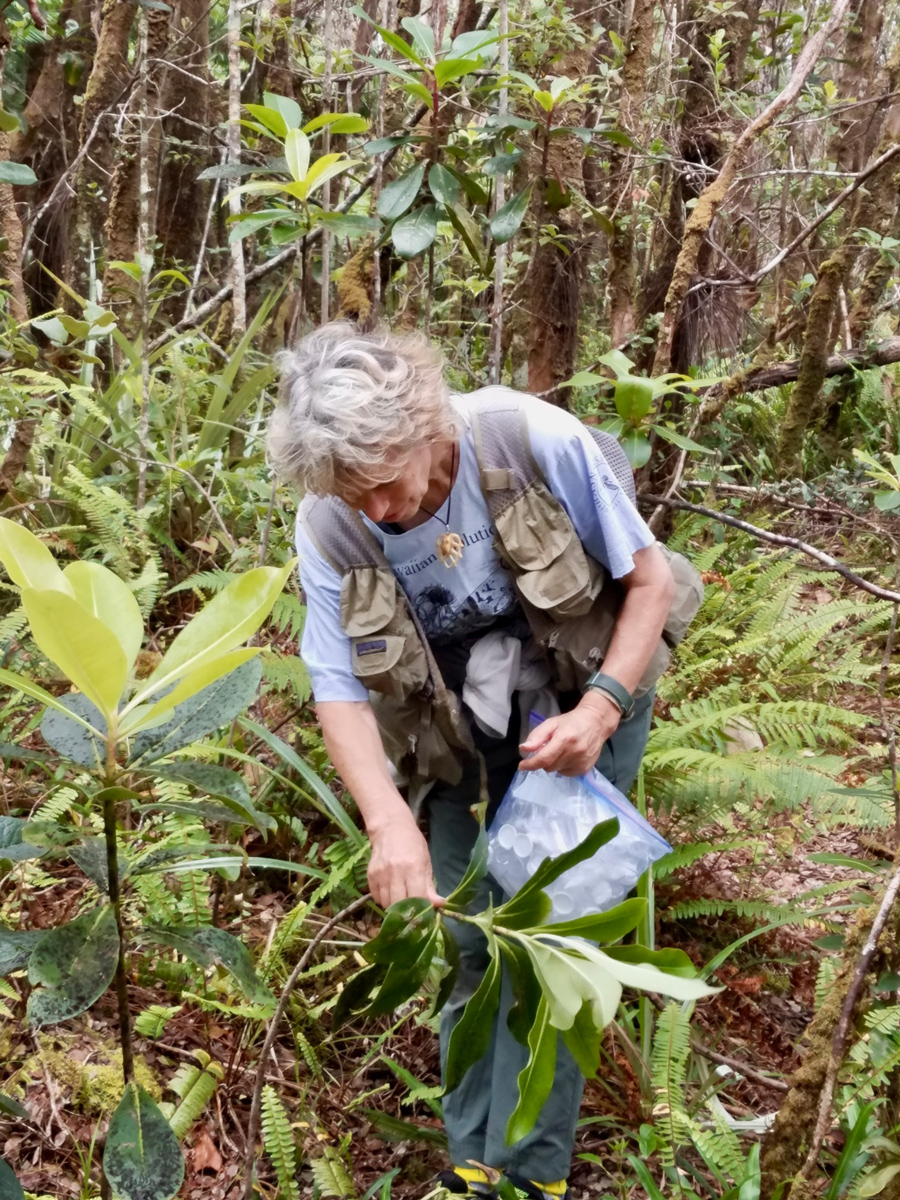
A kipuka forms after lava flows through a forest and hardens to rock, occasionally leading to ecosystem fragmentation. Photo by Matthew Knope.
We usually think of volcanic eruptions as destructive events—but what if they were a creative force at the same time? A study published this spring in the journal Environmental DNA by UC Berkeley biologists and their collaborators gets at the heart of the question by investigating arthropod communities in kīpukas, areas of wet forest left behind by lava flows.
Kīpukas form when lava flows on either side of a hill, ridge, or older lava dome. The study’s authors saw the potential of using Hawaii’s kīpukas, where the forest had been isolated, as a natural experiment to better understand how biodiversity arises in naturally fragmented habitats through the interplay of colonization, extinction, adaptation, and speciation. Using DNA metabarcoding, the study provides the first simultaneous exploration of ecological and evolutionary characteristics in the kīpuka system.

Professor Rosemary Gillespie collects samples from a kipuka forest in Hawaii. Photo by Matthew Knope
“We found genetic differences within species distributed across different forest fragments. At the same time, we found that these differences were arising in the context of different sets of species,” said first author Emma Steigerwald, now a postdoctoral fellow at the University of California Santa Cruz, who conducted this research as a graduate student in the lab of Rosemary Gillespie, a professor in UC Berkeley's Department of Environmental Science, Policy and Management.
“Essentially, lava temporarily isolates some arthropods into little pockets of forest. Not only might this stimulate local adaptation to environmental characteristics in those pockets, but we also get all these unique biological communities that can place their own selective pressures on these creatures," Steigerwald added.
Lava flows are just one example of cyclical natural habitat fragmentation, Steigerwald said, noting that the feedback between ecology and evolution that this sort of landscape dynamic creates could have played a widespread role in shaping present-day biodiversity patterns.
By integrating ecological and evolutionary perspectives, the study underscores the importance of studying both processes simultaneously in order to better understand and predict, and to more intelligently manage the responses of biological communities to environmental change.
Read the full study in Environmental DNA.
